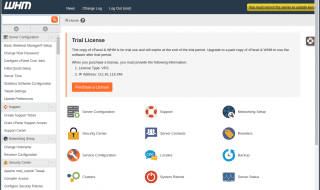A growing number of businesses are doing away with physical office space and making the switch to a virtual office. Is it time that your business went virtual? And, if so, just how can your business make the transition? Here is a brief guide on some benefits and how you can make the switch to a virtual office.
What is a virtual office?
In a traditional office, all employees work within the same building, physically sharing information through in-person meetings and by sharing paper documents.
A virtual office meanwhile consists of everyone working remotely (from their home or from any location they desire), sharing information via digital communication and cloud-based software.
The idea of a virtual office is relatively new, made possible by recent technology. Companies such as Basecamp and Articulate have been employing teams of over 100 virtual employees since the mid-2010s. The recent pandemic has meanwhile forced many companies to adopt virtual practices. While some companies are now returning to their former physical selves, others have realized the benefits of an all-virtual business.
The Benefits of a virtual office

Switching to a virtual office could have numerous benefits for your business. Here are just some of the reasons to go virtual.
- Reduced running costs
A virtual office is less costly to run than a brick-and-mortar one. Some of the costs that come with a physical office include rent/mortgage, energy bills, maintenance, property insurance and furniture. Almost all of these costs can be eliminated by switching to a virtual office.
While you may want to invest in better wi-fi and software for running a virtual office, these costs are unlikely to come anywhere near the expenses of running a physical office. All in all, you can save yourself a huge amount of money by going virtual.
- Increased hiring opportunities
When you hire employees to work in a physical office, you’re limited to hiring local talent. Certain keen applicants may be willing to relocate to work at your company, but most applicants will stay within a 50 mile radius (depending on transport links).
When you switch to a virtual office, you have the freedom to hire talent from around the world. This could help you maximize the chance of finding individuals with all the skills you’re after. By hiring employees from different time zones, some companies have even found ways to operate around the clock to boost productivity (it’s also very useful if you have international clients who are hard to get hold of during conventional 9 to 5 hours).
- No commuting
A virtual office means no more time wasted commuting for you or your employees. The average person spends 200 hours per year commuting. That’s a lot of time that can be freed up.
Many people find that they are able to enjoy more time with family when working remotely. You and your employees even may even have the option to wake up later, resulting in more sleep. No commute also means less stress – as commuting can often be a stressful process. All in all, it could make you and your employees a lot happier.
- Less employee sick days/holiday
Employees take less sick days and request less holiday when working remotely. This is because a virtual office can offer more flexibility. If someone wants to attend their child’s school play in the afternoon but they still have a deadline to meet, they can take the time off in the afternoon and catch up in the evening or early the next morning.
As for sick days, employees may feel that they’re still able to work from home while ill, providing they’re not too sick. Given that physical offices are often prime places for spreading illness, employees are also less likely to get sick when working remotely.
- More productive employees
Studies have found that virtual employees tend to be more productive (one study even claims that remote employees work 1.4 more days per month). This could be because there are actually less distractions when working at home – working from home means not getting sucked into conversations with colleagues. There’s also not the same desire to take long lunch breaks.
Are there any disadvantages to virtual offices?

While there are added benefits to a virtual office, it’s important to realize that virtual offices have their disadvantages too. The flexibility that a virtual office can bring can lead to a lack of structure and scheduling problems. And while studies show that remote employees are more productive in general, others are more likely to get lazy unless spurred on by others. Many people also enjoy the social interaction that a physical office brings. A virtual office can make it harder to get to know your colleagues – even if everyone is communicating constantly, there may still be a sense of isolation because you can’t just chat about trivial things.
How to run a virtual office
If you decide that the benefits outweigh the disadvantages, you’ll then need to decide how exactly to go about transitioning to a virtual office. Below are just some of the steps that you can take to start operating virtually.
- Go paperless
Firstly, if you’re going to be switching to a virtual office, you can’t be using paper any longer for sharing information. In a physical office, you can easily hand out physical documents or pin a paper rota onto a noticeboard. In a virtual office, you cannot do this. Unless you’re willing to spend days mailing paper documents back and forth to one another, paper has to be eliminated.
Start by creating digital versions of any important paper documents that you may have. You may be able to scan these or you may be able to ask the suppliers of these documents for legally binding digital versions.
You can then start relying wholly on digital documentation and digital communication. There may be apps that you can download to electronically collect signatures for digital documents.
- Embrace the cloud
When it comes to sharing documents with remote employees, you’ll want to use the cloud. This allows two or more people to access the same document simultaneously allowing edits and changes to be easily made.
Cloud-based software can also be used to keep progress reports on projects, to share calendars and diaries and store resources such as employee handbooks and templates.
Added benefits of the cloud include added security and the ability to work from multiple devices.
- Choose the right internal communication option
When communicating with employees, you need to work out the best suited communication options. None are as efficient as communicating in-person, but many can come close. A few different communication options to try out include:
- Instant messaging

This is best suited for having quick back-and-forth conversations without the invasiveness of a phone call. Many email servers have their own instant messaging tools that you can use for free, although you can upgrade to more advanced tools. You can also use group chats for sharing information to the group.
- Emails
Emails are better suited for large amounts of information sent out in bulk to employees that may not necessarily require an immediate response. Emails can also be more easily returned to for reference than instant messages.
- Phone calls
If you need to get hold of an individual immediately, a phone call is the best option. They’re also great for relaying information back and forth faster than instant messaging. Work phones can be invasive so are generally not used for unimportant information. Phone calls also aren’t free.
- Video calls
Video calls allow you to have in-person conversations as if you were in the room together. You can conduct presentations via video call and even give people virtual tours. They can be seen as more invasive than phone calls and so tend to be scheduled. The option to talk to multiple people makes them a great substitute to team meetings. It’s worth investing in good quality video call software.
- Outsource external phone call answering
In a physical office, multiple people may share the duty of answering the phone or there may be a receptionist hired for the job. When running a virtual office, it makes sense to outsource a virtual phone answering service instead. This can free up the interruptive task of answering the phone. Any important information can be relayed back to you and you won’t be wasting time answering general enquiries or answering sales calls. Outsourcing a virtual phone answering service is an added cost, but given the amount of money you’re likely to save from doing away with physical premises, it’s money you can afford to spend.
Consider outsourcing a virtual address

A physical office also gives you an official address to receive mail at. Without this physical premises, you may be forced to give out your home address to mailers. One way to get around this is to outsource a virtual address. This is an address that you rent off someone else – your mail is transported here and then relayed on to you. Virtual addresses can often be located in prestigious locations and as a result could make customers think that you have an headquarters based in a prestigious location.





